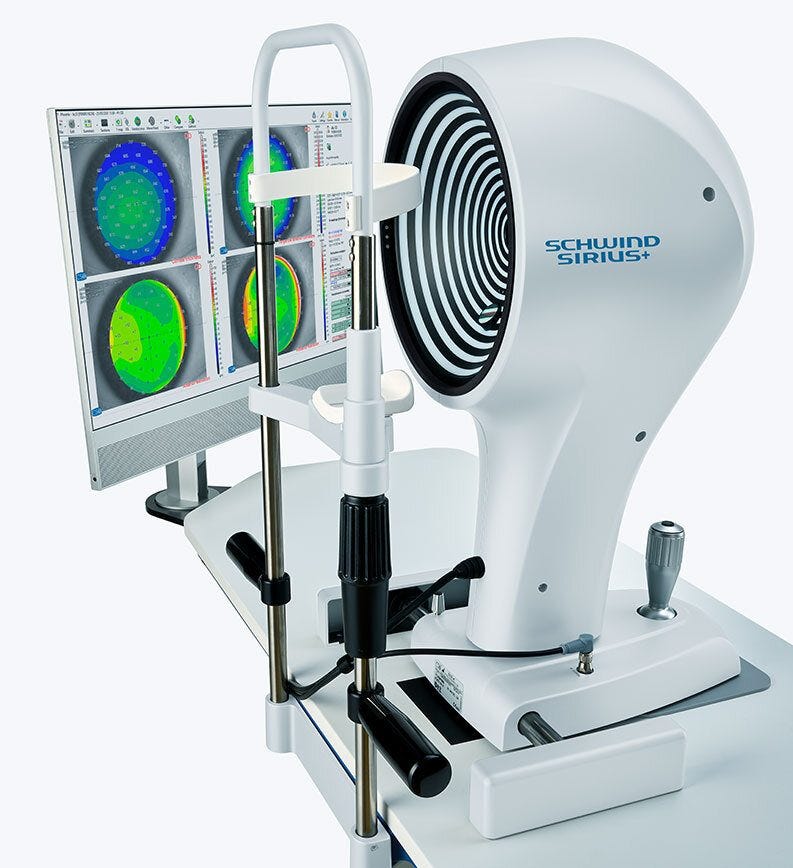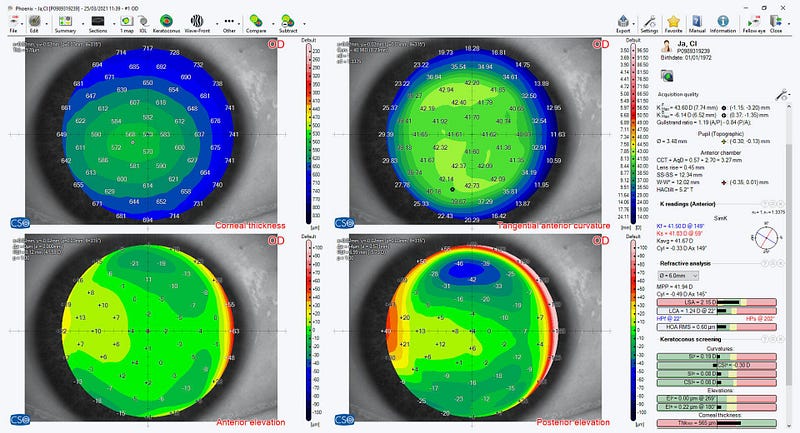Best Sirius Eye Test in Delhi for Corneal Topography
Sirius Eye Test For Corneal Topography

What is Sirius Eye Test?
Scheimpflug imaging and Placido disc topography are used to take detailed, 3D photographs of the front of your eye in the Sirius Eye Test. This test accurately measures cornea shape, curvature, and thickness. It helps doctors detect and treat keratoconus, corneal ectasia, and dry eye syndrome. By providing eye anatomy and health data, the Sirius Eye Test helps plan refractive operations like LASIK.
How Sirius Eye Test Help?
-> Provides precise information on the thickness (pachymetry), elevation, curvature, and power of both the front and back surfaces of the cornea.
-> Diagnoses the entire front part of the eye in a single step.
-> Captures high-quality images of the cornea up to 16 millimetres in diameter.
-> Calculates all necessary measurements for the front part of the eye using up to 100 high-resolution sections. Users can choose how many sections to measure.
Offers more precise centring and results for treatments through static cyclotorsion correction information.
Applications of Sirius Eye Test
· Keratoconus Screening: These tests provide essential corneal data, helping to detect early signs of keratoconus and prevent complications related to ectasia.
· IOL Calculation: Using ray tracing technology, this module accurately calculates intraocular lenses (IOLs) for both treated and untreated eyes, aiding in precise treatment planning.
· Intrastromal Rings Placement: Pachymetry maps and corneal elevation profiles help plan the exact placement of intrastromal rings, improving treatment outcomes.
· IOL Alignment and Patient Selection: The Pentacam is used for high-quality and premium IOLs, such as Multifocal and Toric, in cataract surgery to ensure correct alignment and select the right patients.

· Pupillography: Sirius measures pupil diameter dynamically or statically under different lighting conditions. Accurate data on pupil center and diameter are crucial for planning and performing refractive treatments.
· Video Keratoscopy: Special light sources stimulate fluorescein, aiding in the fitting of rigid contact lenses. This is done with the help of Sirius Machine.
· Dry Eye Analyses: A high-resolution colour camera evaluates the tear film, meibomian glands, conjunctival and limbal hyperaemia, and tear meniscus size. Thus Sirius provides a comprehensive assessment of the corneal condition and supports the diagnosis of Dry Eye disease.
· Corneal Ectasia Detection: Identifies thinning and irregularities in the cornea, helping to diagnose and monitor corneal ectasia.
· Refractive Surgery Planning: Supplies crucial data for planning LASIK and other vision correction surgeries, ensuring accurate and safe procedures.
· Post-Surgery Monitoring: Evaluates changes in the cornea after surgery to ensure proper healing and outcomes.
Frequently Asked Questions (FAQs)
Q.1 Are these tests suitable for everyone?
Ans: Yes, these tests are beneficial for patients of all ages, especially those undergoing refractive surgery, managing eye diseases like glaucoma, or assessing corneal health.
Q.2 Do I need special preparation for a Pentacam or Sirius test?
Ans: No special preparation is required. You may be asked to remove contact lenses before the test to ensure accurate measurements.
Q.3 Are there any risks associated with this test?
Ans: This test is generally safe.
Q.4 How long does the Sirius test take?
Ans: The test typically takes a few minutes per eye. It is non-invasive and painless.
Q.5 Can this test detect early signs of eye diseases?
Ans: Yes, this test is effective in detecting early signs of conditions like keratoconus, glaucoma, and dry eye syndrome, enabling timely intervention and management.

Comments
Post a Comment